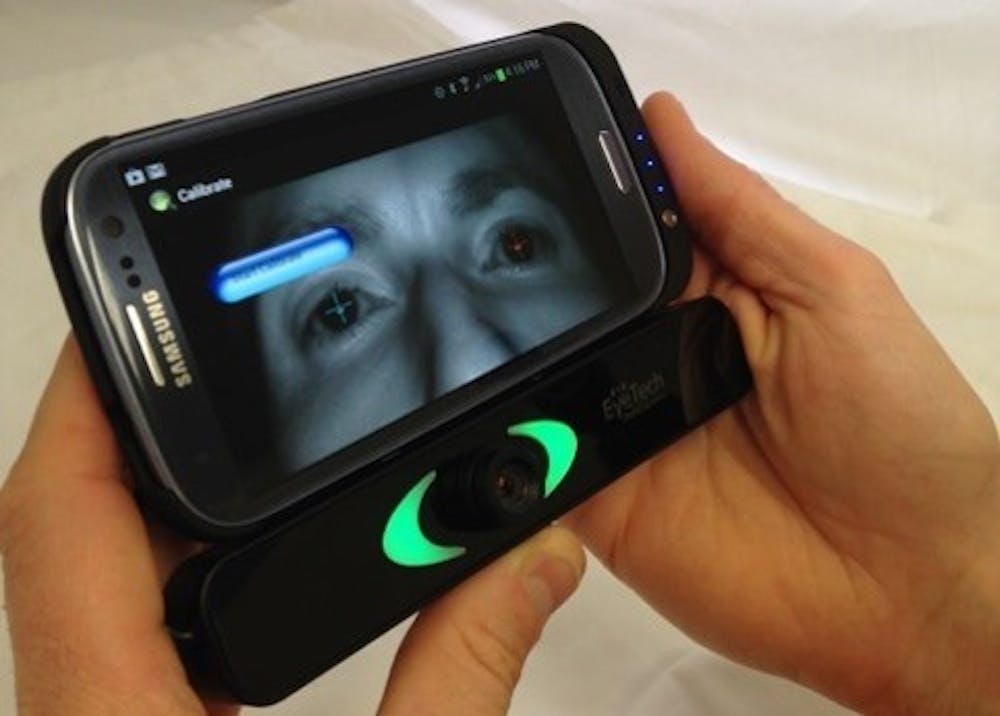More than 9 million people aged 12 and older reported having driven under the influence of illicit drugs in 2013, according to the 2013 National Survey on Drug Use and Health.
ASU has built a new application that would detect marijuana impairment in hopes of lowering this statistic.
Richard Dale, the director of ASU’s Center for Emergency Management and Homeland Security, said he believes the app will work to help detect impaired drivers as well as deter drivers from getting in the car while under the influence.
“Whether you’re for or against the legalization of marijuana, I’ve talked to people on both sides of the issue, we’re not pro- or anti-legalization," Dale said. "What we are focused on is deterring and removing impaired drivers from the roadway."
Dale said the app uses high-speed cameras, accessible on most phones and tablets today, to gauge microsaccadic eye movements, which are small and involuntary and resemble jerks.
Such movement can actually reveal what’s going on in the brain, and in cases such as this, reveal an impairment, whether temporary or not.
“Today it’s actually used to diagnose brain disease and injury," Dale said. "For example, it’s used today to diagnose Alzheimer's and Parkinson's disease. This technology is also used by the United States Marine Corps to train their Apache Attack Helicopter pilots, and what we’re doing is we’re using that same patented technology — which ASU has the patent on — we’re using that technology to look at the signature of the eye to tell us the brain is impaired, but it further tells us what’s impairing it.”
The work on the project hopes to use the app to hit the issue on multiple fronts. First and foremost, the researchers want to provide officers with an accurate test to gauge drug impairment.
However, they also plan to use it to provide drivers with a means of education about the drug. Richard Besserman, the center's operations executive, said marijuana lacks the adequate education outreach that substances like alcohol, with rates of impairment slowly declining, has.
Besserman, who has 25 years of experience as a surgical specialist and around 15 in bioengineering, was one of the heads of the project and worked alongside Dale.
He said he hopes to branch out on the project in the future, extending it to other drugs and impairments.
They believe they can use this same technology of detecting the microsaccadic eye movement to detect other drugs. Besserman said each drug has its own pattern or signature in the movement and that they can use it to detect others.
“Initially we’re looking at the signature (of marijuana), the bio-signature it’s called, but our scientists strongly believe that they can find a signature that’s specific to certain drugs,” Besserman said. “So a combination of alcohol and marijuana or a combination of alcohol and any of the hard drugs, for example, heroin, oxycodone, or any phetamines.”
The initiative is still in its early stages of development. However, biomedical engineering sophomore Trisha Dasgupta said she feels confident in the center’s ability to develop this technology further.
"This technology is a step in the right direction for the ASU campus and even Arizona, and it could definitely change the way law enforcement handles these situations," Dasgupta said.
Reach the reporter at megan.janetsky@asu.edu or follow @meganjanetsky on Twitter.
Like The State Press on Facebook and follow @statepress on Twitter.




